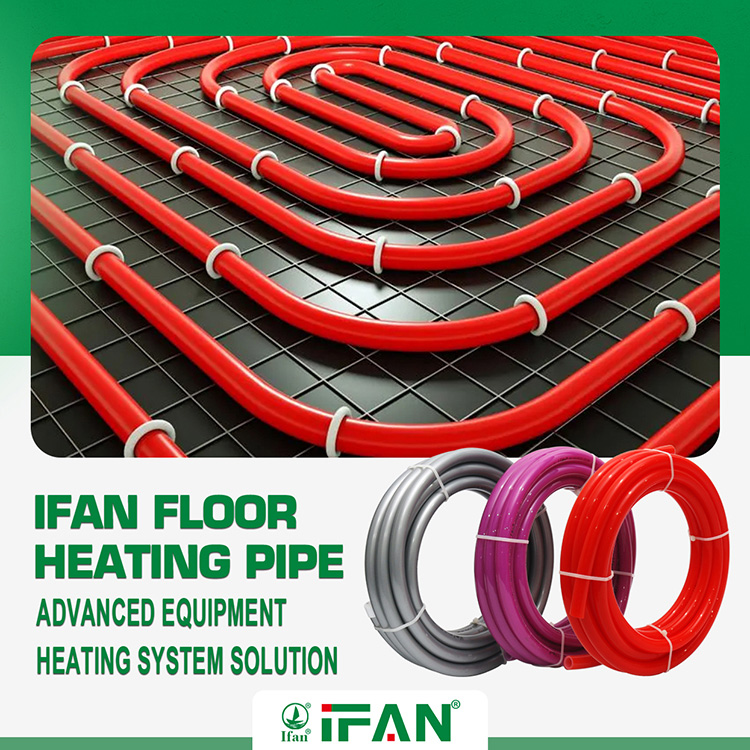Is PEX Pipe Better Than PVC?
Comparing the Pros and Cons of Crosslinked Polyethylene vs Polyvinyl Chloride for Plumbing Systems
As polypropylene random copolymer (PPR) grows as a preferred piping material, PPR fittings factories use advanced processes to produce the connectors essential for complete plumbing systems. This article explores PPR fitting manufacturing and how factories supply this vital component.IFAN factory with 30+ years of manufacturing experience supports color/size customization support free samples. Welcome to consult for catalog and free samples. This is our Facebook Website: www.facebook.com.

PEX and PVC are two common plastic piping materials used for residential and commercial plumbing applications. When choosing pipe, builders weigh factors like material properties, performance, and installation. This article examines whether PEX is better than PVC for water service plumbing systems.
Heat Resistance Comparison
PVC has a higher heat deflection threshold than PEX, retaining strength at 140°F vs just 90°F for PEX. This gives PVC more headroom when handling hot water delivery. However, both materials are used within their temperature limits.
For heat resistance, PVC is better for:
- General purpose hot and cold water lines
- Close piping connections to water heaters
- Hot water recirculation loops
- Geothermal piping systems
PEX has sufficient heat rating for:
- Hot and cold potable plumbing with temperature regulators
- Radiant floor heating systems
- Chilled water lines
Freeze Resistance Comparison
PVC and PEX both become brittle and prone to fracture when frozen. However, PEX has a lower elastic modulus, allowing it to stretch more before breaking when expanding ice applies internal pressure.
For freeze resistance, PEX is better for:
- Cold climate plumbing prone to freezing
- Piping that experiences freeze/thaw cycles
- Exposed water lines in unheated areas
PVC should be avoided in areas prone to freezing temperatures. It can withstand only a few freeze/thaw incidents before becoming damaged and developing cracks.
Pressure Rating Comparison
The pressure capability of PVC and PEX depends on pipe size and rating class, but PVC generally can withstand higher pressures.
For pressure capacity, PVC is better for:
- High-pressure supply mains over 160 PSI
- Tall building risers requiring 200+ PSI rating
- Pumping systems that generate high differential pressures
PEX sufficiently handles typical residential and commercial pressures up to 160 PSI. PVC offers a safety factor for higher-pressure applications.
Chemical Resistance Comparison
PVC and PEX have similar inertness to drinking water exposure. Neither pipe material impacts the water taste or causes contamination.
PVC has slightly better chemical resistance to acids, alkalis, oxidants, and salts. PEX is more vulnerable to chlorine degradation.
For chemical resistance, PVC is better for:
- Highly aggressive or corrosive water chemistry
- Saltwater pools and plumbing systems
- Industrial fluid and chemical transfer piping
PEX has adequate chemical resistance for typical residential and commercial potable plumbing.
Collapse Pressure Comparison
Rigid PVC piping maintains its round shape even under vacuum conditions inside pipes. Flexible PEX tubing can deform and collapse inward without adequate external support.
For resistance to collapse from negative pressures, PVC is better for:
- Drainage systems subject to siphoning
- Water mains in areas prone to low or fluctuating pressures
- Suction pump connections
PEX requires engineered support spacing to prevent collapse under vacuum. PVC’s rigid form inherently avoids this risk.
Installation Comparison
PEX allows faster, simpler installation than PVC or CPVC pipe in most cases. PEX connections use simple cold expansion, crimping, or push-to-connect joints that don’t require glues, primers, or solvents.
For ease and speed of installation, PEX is better for:
- Faster plumbing rough-ins allow faster construction
- Reducing the potential for leakage from failed joints
- Avoiding noxious glues and fumes during installation
- DIY home plumbing repairs and fixture additions
PVC and CPVC require more time-consuming preparation and cement joining during installation.
Material Cost Comparison
PVC pipes generally cost less than PEX tubing on a per-foot basis for most common sizes. PVC material prices benefit from very large economies of scale. However, PEX can ultimately cost less to install in many cases.
For strictly purchase price, PVC is better when:
- Seeking the lowest first cost is the priority
- Pipe sizes exceed 4″, where PEX costs more than PVC
- Budgets are highly constrained
The faster installation of PEX can offset some additional material expenses, especially in labor-intensive commercial plumbing projects.
Performance Comparison Over Time
PVC can suffer gradual embrittlement and cracking over decades of use. PEX has demonstrated excellent long-term durability when properly manufactured and installed. Neither material has a distinct durability advantage.
There is not sufficient long-term data to declare either PVC or PEX superior in multi-decade performance. Lifespans of 50+ years are feasible with both materials.
Key Considerations When Choosing Between PEX and PVC
PEX and PVC both carry pros and cons for plumbing systems. Important factors when deciding include:
- Application type – hot vs cold water, drainage vs supply
- Expected pressures – high pressure favors PVC
- Water chemistry – PVC better resists aggressive chemistry
- Susceptibility to freezing – PEX withstands freeze/thaw better
- Installation considerations – PEX is faster to install in most cases
- Cost – PVC pipe has a lower per-foot price but higher labor
Weighing these factors allows proper material selection for each unique plumbing application and operating environment.
IFAN
IFAN factory started in 1993. And IFAN has a workshop of 120000 square meters with 610 staff. IFAN can design and produce all plumbing pipe and fitting including PPR, PVC, CPVC PPSU HDPE PEXA PEXB PERT pipe and fitting, brass fitting, brass ball valve, heating system, gas system, sanitary faucets, and hose, In the past 30 years, IFAN has never forgotten his mission-To protect health and safety. And IFAN factory uses the best materials to produce high-quality pipe and fittings with an automatic production line and high-tech quality control machines.

